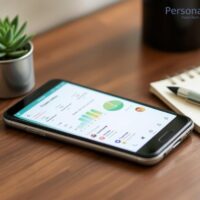In today’s unpredictable world, having a robust financial strategy is more crucial than ever. Two essential components of a sound financial plan are emergency funds and sinking funds. While both serve as financial buffers, they cater to different needs and situations. Understanding the distinctions between these funds can empower you to make wiser budgeting choices that secure your financial future.
Emergency funds are your first line of defense against unexpected financial setbacks. Think of them as your financial parachute, designed to catch you when life throws curveballs like job loss, medical emergencies, or urgent home repairs. These funds are crucial because they prevent you from falling into debt during crises, allowing you to handle emergencies without derailing your long-term financial goals.
Key Characteristics of Emergency Funds:
- Typically cover 3-6 months’ worth of living expenses.
- Stored in easily accessible accounts, like savings accounts.
- Used exclusively for unforeseen circumstances.
Sinking funds, on the other hand, are designed for planned expenses. They act as a financial strategy to set aside money for future expenditures like holidays, car repairs, or even a new gadget. By saving for these anticipated costs, you avoid the stress of scrambling for cash at the last minute and can make informed decisions about your spending.
Understanding the Structure of Sinking Funds:
- These funds are earmarked for specific future expenses.
- Generally require smaller, regular contributions over time.
- Help in budgeting for larger purchases without impacting your day-to-day finances.
While emergency funds and sinking funds may seem like separate entities, they work harmoniously to create a well-rounded financial safety net. Having both ensures that you are prepared for the unexpected while also allowing you to plan for future expenses. This dual approach to saving not only provides peace of mind but also fosters financial discipline.
By differentiating these funds and understanding their unique purposes, you can take control of your financial journey. So, whether you’re building an emergency fund or setting up a sinking fund, the key is to start now and make consistent contributions. Your future self will thank you!
Disclaimer
This article has been created or edited with the support of artificial intelligence and is for informational purposes only. The information provided should not be considered investment advice. Please seek the support of a professional advisor before making any investment decisions.






